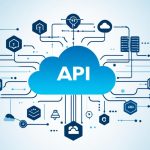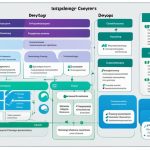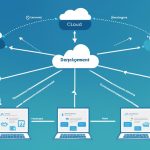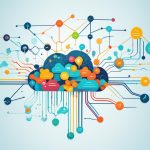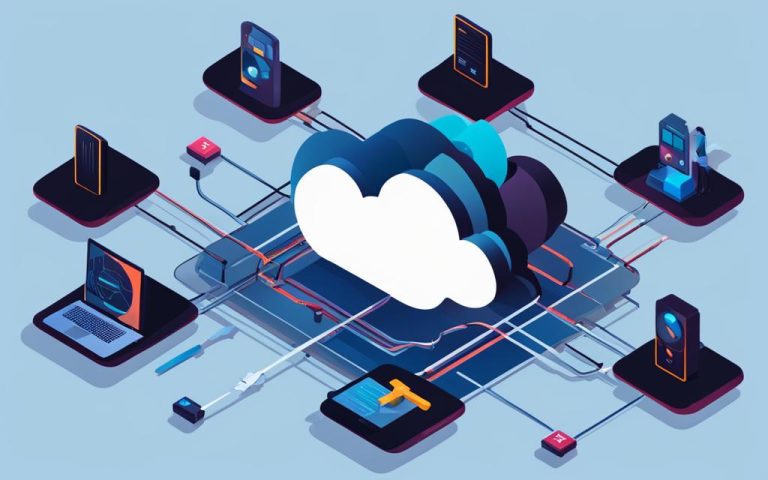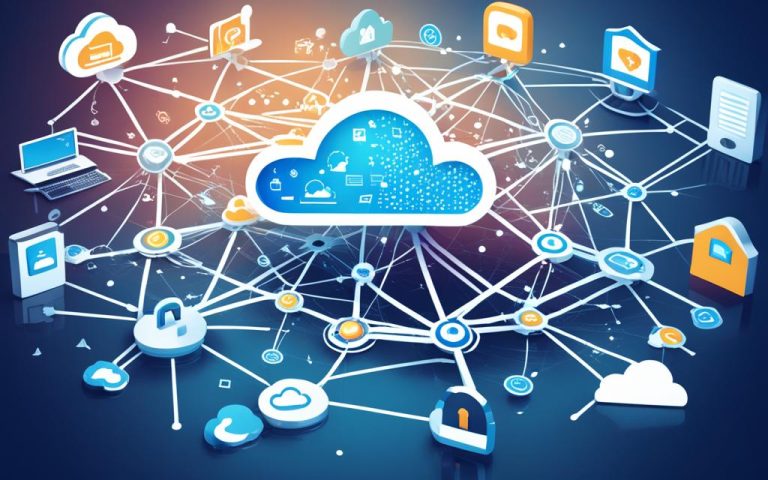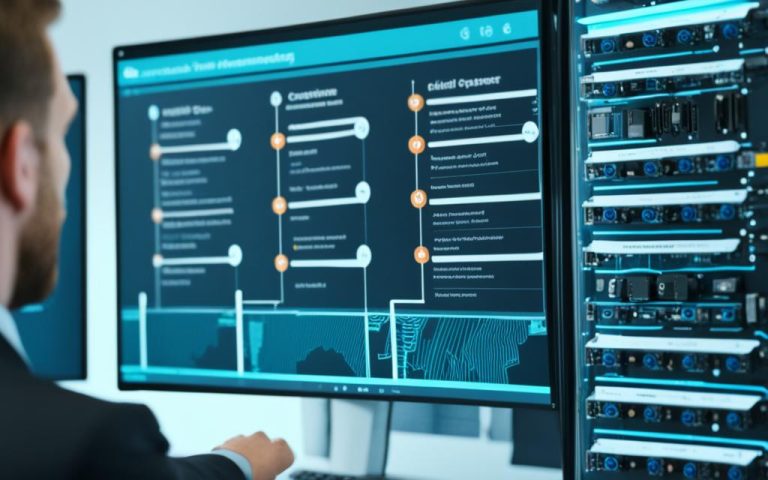Edge computing has emerged as a transformative technology that enables faster and more efficient computing at the periphery of cloud networks. With the increasing demand for real-time data processing and analytics, organizations are turning to edge computing to optimize their operations and deliver enhanced user experiences.
Cloud Edge Computing Tools play a crucial role in this ecosystem, empowering businesses to harness the power of edge computing in their IoT deployments. These tools provide the necessary infrastructure and capabilities to process, analyze, and store data closer to the source, reducing latency and improving overall performance.
Edge computing is particularly relevant for industries relying on IoT applications, where real-time synchronization with real-world activities is essential. By bringing computation and storage closer to the data source, these Cloud Edge Computing Tools enable businesses to extract valuable insights from massive data volumes, enhancing decision-making and operational efficiency.
Leading cloud providers like Amazon’s AWS, Microsoft’s Azure, Google, and IBM offer top-edge capabilities through their respective platforms. These Cloud Edge Computing Tools provide a range of features and strengths tailored to meet the unique demands of different industries and use cases.
In the following sections, we will explore the concept of edge computing in greater detail, delve into the top edge computing platforms of 2022, examine the benefits of edge computing, showcase real-world examples of its applications, and discuss how edge computing is reimagining user experiences when integrated with cloud technologies.
Stay tuned to discover how Cloud Edge Computing Tools can transform your organization’s cloud network and unlock new possibilities for innovation.
Understanding Edge Computing
Edge computing is a distributed computing system that enables data to be processed closer to its origin, reducing latency and easing pressure on cloud and data center systems. It involves platforms that enable real-time data processing, caching, buffering, and optimization at the edge device or IoT system.
Edge computing is particularly beneficial for IoT use cases, where devices are typically wireless and located in remote locations. It extends cloud and data center computing and is often linked to IoT applications.
The key features of an edge computing platform include:
- Edge application support: Enabling developers to create and deploy applications at the edge of the network.
- Analytics insights: Providing real-time analytics and insights on edge data.
- Cloud to edge infrastructure: Facilitating communication between the cloud and edge devices.
- Edge security: Ensuring data privacy and security at the edge.
- IoT enablement: Enabling seamless integration with IoT devices and systems.
By leveraging edge computing platforms, organizations can optimize the use of cloud networks, enable real-time data processing, improve response times, and address the challenges posed by remote IoT deployments.
“Edge computing is a distributed computing system that enables data to be processed closer to its origin, reducing latency and easing pressure on cloud and data center systems.”
Top Edge Computing Platforms in 2022
When it comes to edge computing, there is no shortage of platforms available in the market. Each platform offers unique features and capabilities to cater to different use cases and development needs. As we enter 2022, here are some of the top edge computing platforms worth considering:
- Amazon AWS IoT Greengrass and Outposts: Amazon’s AWS IoT Greengrass provides a local compute and storage capability that extends cloud capabilities to edge devices. With Greengrass, developers can securely run Lambda functions and deploy machine learning models to process data locally, reducing latency and ensuring real-time responsiveness. AWS Outposts, on the other hand, brings AWS services, infrastructure, and operating models to virtually any data center, co-location space, or on-premises facility.
- Microsoft Azure IoT Edge: Microsoft’s Azure IoT Edge is a fully managed service that brings cloud intelligence to edge devices. It allows users to deploy and manage containerized applications on edge devices, enabling local data processing, real-time analytics, and AI capabilities. Azure IoT Edge seamlessly integrates with other Azure services, providing a comprehensive solution for edge computing.
- Google Cloud IoT Edge: Google offers its own edge computing platform called Google Cloud IoT Edge. It allows developers to build and deploy intelligent edge applications using Google Cloud services. With Cloud IoT Edge, users can analyze data locally, respond to events in real-time, and securely connect to the cloud. The platform leverages Google’s expertise in machine learning and analytics to enable powerful edge computing capabilities.
- IBM Edge Application Manager: IBM’s Edge Application Manager helps organizations deploy, operate, and manage workloads on edge devices at scale. It provides a unified edge computing platform that simplifies the development, deployment, and management of edge applications. With built-in AI capabilities, security features, and analytics insights, IBM Edge Application Manager empowers enterprises to unlock the full potential of edge computing.
These are just a few examples of the top edge computing platforms available in the market. Each platform brings its own strengths and advantages, and the choice ultimately depends on the specific requirements and goals of the organization. As edge computing continues to gain momentum, these platforms play a crucial role in enabling the efficient processing and analysis of data at the edge.
Enhancing Edge Computing with Powerful Platforms
Top edge computing platforms in 2022 offer a diverse range of capabilities to empower organizations with the potential of edge computing. Leveraging these platforms enables businesses to take advantage of real-time data processing, reduced latency, and improved overall performance. By deploying edge computing applications on these platforms, organizations can harness the power of edge analytics, AI, and cloud integration.
Benefits of Edge Computing
Edge computing offers several benefits that make it a valuable tool for optimizing cloud networks. These benefits include:
- Reduced Latency: By processing data closer to the source, edge computing significantly reduces latency. This allows for near real-time insights and faster responses, enhancing the overall user experience.
- Bandwidth Optimization: Edge computing minimizes the need to transfer large volumes of data to centralized cloud servers. By processing and analyzing data locally, it reduces network congestion and optimizes bandwidth utilization.
- Enhanced Reliability: With edge computing, applications and services can continue to function even in the event of network disruptions. Local processing ensures uninterrupted operations and improves reliability.
- Data Privacy and Security: Edge computing enables sensitive data to be processed locally, enhancing privacy and security. It minimizes the risks associated with transmitting data over networks and ensures compliance with data privacy regulations.
- Cost Efficiency: By reducing the need for extensive data transfers and optimizing network resources, edge computing helps to lower operational costs. It eliminates the need for excessive cloud storage and reduces the dependency on expensive network infrastructure.
- Scalability: Edge computing allows for distributed processing, enabling organizations to scale their operations seamlessly. It accommodates the growing demands of IoT and ensures efficient resource allocation.
“Edge computing reduces latency, optimizes bandwidth, enhances reliability, provides data privacy and security, offers cost efficiency, and enables scalability.”
These benefits make edge computing a strategic choice for businesses seeking to leverage the advantages of real-time data processing and improve overall operational efficiency.

| Benefit | Description |
|---|---|
| Reduced Latency | Processing data closer to the source leads to near real-time insights and faster responses. |
| Bandwidth Optimization | Minimizes network congestion by processing and analyzing data locally, optimizing bandwidth utilization. |
| Enhanced Reliability | Local processing ensures continued operation even during network disruptions, improving reliability. |
| Data Privacy and Security | Sensitive data is processed locally, reducing the risks associated with transmitting it over networks. |
| Cost Efficiency | Reduces operational costs by minimizing data transfers, cloud storage, and network infrastructure. |
| Scalability | Allows for distributed processing, enabling seamless scalability to meet the growing demands of IoT. |
Edge Computing Examples
Edge computing has numerous real-world applications that are already in use or hold significant potential. Let’s explore some notable examples:
1. Smart Cities
Edge computing plays a crucial role in developing smart cities by facilitating real-time data analysis and decision-making. Intelligent sensors and devices deployed throughout the city collect and process data at the edge, enabling efficient traffic management, environmental monitoring, waste management, and enhanced public safety. By minimizing latency and enabling rapid response, edge computing helps transform cities into more sustainable, efficient, and livable environments.
2. Autonomous Vehicles
The advent of autonomous vehicles relies heavily on edge computing to enable real-time data processing at the vehicle level. By leveraging edge computing capabilities, autonomous vehicles can analyze vast amounts of sensor data, make split-second decisions, and effectively navigate their surroundings. Edge computing empowers autonomous vehicles to operate safely and efficiently while reducing reliance on cloud connectivity, ensuring real-time responsiveness.
3. Industrial IoT
The industrial sector benefits greatly from edge computing in the form of Industrial IoT. Machine sensors and devices deployed in factories and manufacturing plants generate vast amounts of data that require real-time analysis. Edge computing enables on-site data processing, reducing latency and minimizing dependence on cloud infrastructure. This allows for real-time monitoring and control of industrial processes, optimizing operational efficiency, predictive maintenance, and enhancing worker safety.
4. Retail
Retailers are utilizing edge computing to enhance their customer experience and streamline operations. By deploying edge devices in physical stores and distribution centers, retailers can analyze customer preferences, personalize recommendations, and optimize inventory management in real-time. Edge computing in retail enables faster in-store analytics, ensuring seamless transactions, and empowering store associates with real-time inventory visibility.
Reimagining Experiences with Edge Computing
Edge computing has the potential to revolutionize user experiences by enhancing relevance at every touchpoint. By leveraging the larger cloud backbone, edge computing enables the creation of new insights and experiences that were previously not possible. When seamlessly integrated with the cloud, it generates better predictions, provides more relevant information, and facilitates continuous improvement.
Key Characteristics of Edge Use Cases
Edge computing offers several key characteristics that significantly impact user experiences:
- Intelligent Machines and Real-time Productivity: Edge computing enables intelligent machines to process data in real-time, leading to enhanced productivity and efficiency.
- Optimized Experiences in Digital Production and Consumption: With edge computing, digital production and consumption experiences can be optimized, delivering faster and more responsive services.
- Extended Reality Experiences: Edge computing facilitates immersive extended reality experiences by reducing latency and ensuring seamless interactions.
- Enhanced Privacy and Security: Edge computing ensures improved privacy and security by minimizing the need for data transfers to centralized systems.
- Always-on and Untethered Operations: With edge computing, devices can operate autonomously in real-time, even without a constant connection to the cloud.
These characteristics enable edge computing to unlock new possibilities and redefine user experiences across various industries.
“Enabling real-time productivity, optimizing digital production and consumption experiences, facilitating extended reality applications, enhancing privacy and security, and enabling always-on and untethered operations.”
Conclusion
Edge computing management tools play a vital role in optimizing cloud networks and facilitating real-time data processing at the periphery of the network. These tools, including the top edge computing platforms mentioned earlier, offer valuable features such as edge application support, analytics insights, cloud to edge infrastructure, edge security, and IoT enablement.
By harnessing the power of edge computing, organizations can achieve faster response times, efficiently process high volumes of data, ensure privacy and security, and enable autonomous operations. Real-world examples in industries like retail and healthcare demonstrate the immense potential of edge computing to revolutionize experiences and unlock new opportunities for innovation.
The integration of edge and cloud technologies opens up endless possibilities for reimagining experiences. With edge computing, user interactions can become more relevant and personalized, thanks to the insights gained from the larger cloud network. Intelligent machines, optimized digital production and consumption, extended reality experiences, enhanced privacy and security, and always-on and untethered operations are some of the characteristics that edge computing can bring to life.
In conclusion, edge computing management tools are essential for organizations looking to optimize their cloud networks and harness real-time data processing. By leveraging these tools, businesses can transform their operations, deliver enhanced experiences, and stay ahead in an ever-evolving digital landscape. The integration of edge and cloud technologies offers immense potential for the future, paving the way for groundbreaking innovations and advancements in various industries.
FAQ
What is edge computing?
Edge computing is a collection of tools that enable faster computing at the periphery of the network, closer to the data source. It involves platforms that provide data processing, analytics, computing, and storage where they are needed, such as retail locations or warehouses.
Why is edge computing important for IoT applications?
Edge computing is particularly relevant for IoT applications that require real-time synchronization with real-world activity. Enterprises consider edge computing to be almost exclusively tied to IoT, as it involves processing events generated by real-world activities.
What are some top edge computing platforms in 2022?
Some of the top edge capabilities from public cloud providers include Amazon’s AWS IoT Greengrass and Outposts, and Microsoft’s Azure IoT Edge. Google and IBM also offer edge computing platforms with their own unique features and strengths.
What are the benefits of edge computing?
Edge computing is a distributed computing system that enables data to be processed closer to its origin, reducing latency and easing pressure on cloud and data center systems. It offers benefits such as reduced latency, improved scalability, enhanced security, and optimized network performance.
Can you provide examples of edge computing applications?
Some notable examples of edge computing applications include smart cities, remote asset monitoring, autonomous vehicles, industrial automation, and healthcare monitoring devices.
How does edge computing enhance user experiences?
Edge computing has the ability to reimagine user experiences by increasing relevance at each touchpoint. It creates new insights and experiences, enabled by the larger cloud backbone. Some key characteristics include intelligent machines and real-time productivity, optimized production and consumption experiences, extended reality experiences, enhanced privacy and security, and always-on and untethered operations.


